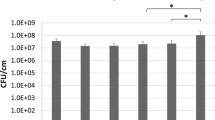Abstract
The biofilm mode of growth has been implicated in the majority of human bacterial infections. In the urinary tract, notable biofilm-associated infections include prostatitis, chronic cystitis, struvite urolithiasis, and catheter-associated infections. Biofilms protect the causative organisms from host defences and antimicrobial therapy. Biofilm formation has traditionally been considered to result from adhesion and capsule formation by adherent microorganisms. Recent work has shown that a large number of genes are activated during this process, some of which have been associated with twitching motility, quorum sensing, and slow growth. In this paper, we review some of the recent work on biofilm biology and highlight its role in urinary tract infections, particularly those associated with urinary catheters.
Similar content being viewed by others
Author information
Authors and Affiliations
Rights and permissions
About this article
Cite this article
Morris, N., Stickler, D. & McLean, R. The development of bacterial biofilms on indwelling urethral catheters. World J Urol 17, 345–350 (1999). https://doi.org/10.1007/s003450050159
Issue Date:
DOI: https://doi.org/10.1007/s003450050159




